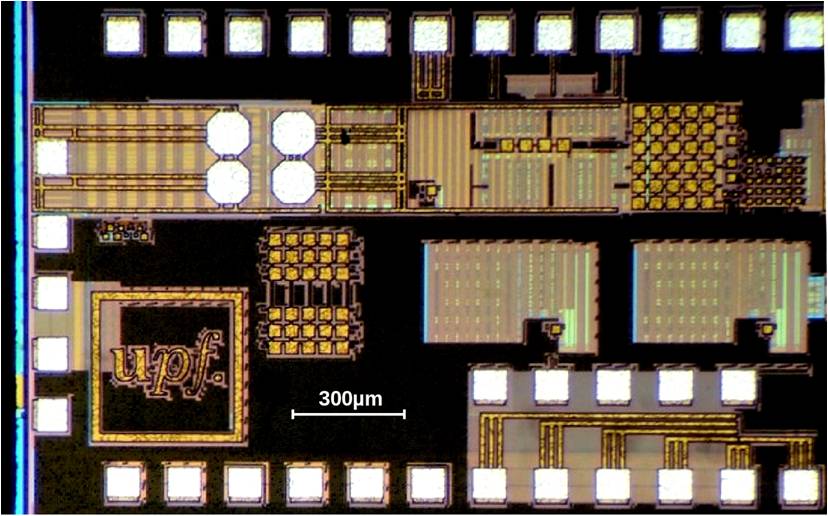The Biomedical Electronics Research Group is starting to develop chips for medical implants
The Biomedical Electronics Research Group is starting to develop chips for medical implants
The team led by Antoni Ivorra, has designed, sent to manufacture and tested the first functional microchip for the development of devices for implantation in the human body, within the framework of the eAXON European research project which is funded by the European Research Council.

In recent decades, we have experienced a technological revolution with the emergence in our everyday lives of connected smart devices. These devices, such as phones, watches and tablets, incorporate the latest advances in microelectronics using increasingly powerful, energy efficient processors. This great ability to miniaturize has led chip manufacturing to require increasingly complex and costly facilities, reducing competition and hampering access to these microelectronic technologies.
This means that most companies and research groups do not design the chips they integrate into their electronic developments but use generic chips designed and produced by a handful of international companies. Only in cases where a very high production volume is required or which requires a high level of miniaturization is the design of a chip for a specific application justified, which is known as ASIC (Application Specific Integrated circuit).
Since the mid-nineties there is a strategic European project, Europractice, which allows research institutions and companies access to design tools and the manufacture of microchips at affordable prices. This is achieved by jointly manufacturing the designs of various institutions within the same silicon wafer, thus sharing manufacturing costs. This initiative has enabled UPF to get both the information necessary and the technical support for the design of an initial prototype of a functional chip and its manufacture at prototype level using modern technology and at a reasonable cost.
The Biomedical Engineering Research Group (BERG), directed by Antoni Ivorra, at the UPF Department of Information and Communication Technologies (DTIC), has designed, sent to manufacture and tested the first functional microchip for the production of devices for implanting in the human body. The purpose of these devices is to stimulate and monitor motor skills and they are developed within the European research project funded by the European Research Council called eAXON.
The chips will be used to implement injectable neuromuscular stimulators
“The microchip developed uses 180 nm technology capable of operating at high voltages (up to 35 V), while allowing the integration of small-sized logic circuits. The prototype includes several blocks to be fed by external signals, generate voltage references, regulate internal voltage, generate the signals necessary for the internal logic to function, and communicate with an external system, performing downloads on muscle tissue”, explains Albert Comerma, a researcher and developer with the BERG.
“This has been the pilot phase prior to obtaining the end devices. It has allowed us to progress with the project with the reassurance of having checked the correct operation of the elements designed, having tested the entire manufacturing cycle”, Comerma adds.
